

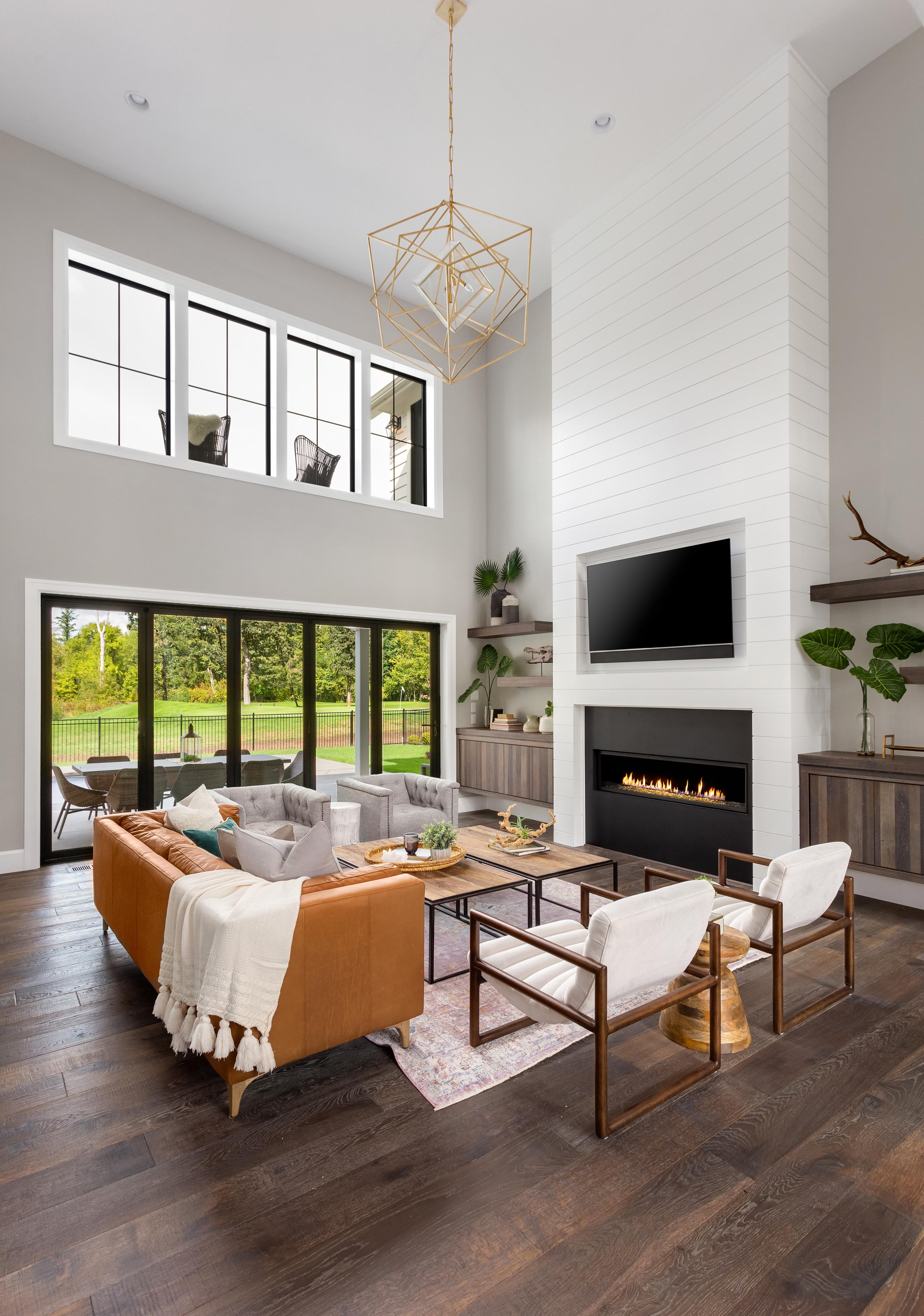
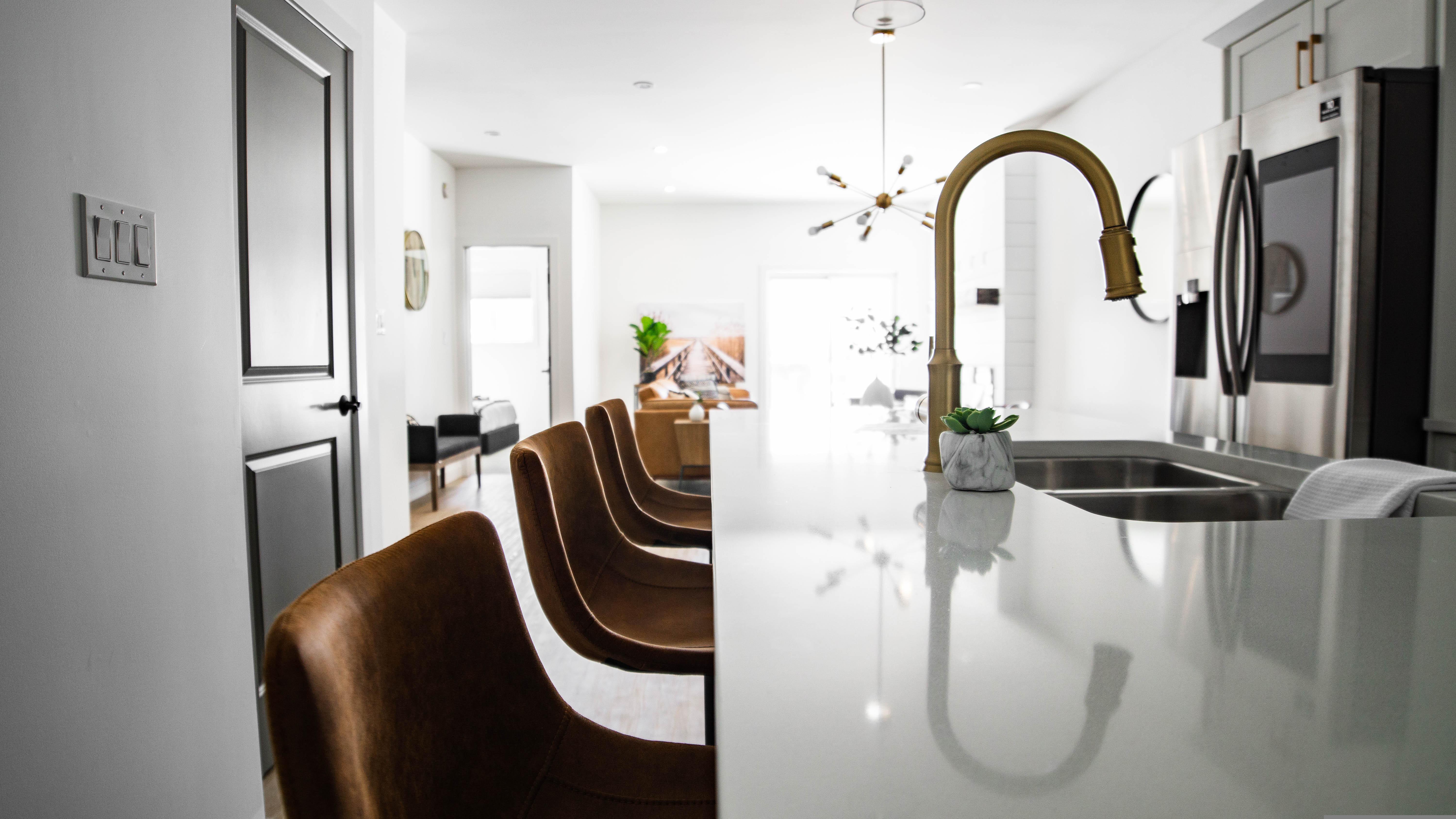





UNDERSTANDING THE VALUE OF YOUR HOME
VACANT OR OCCUPIED: WHICH IS BETTER TO SELL?
ADDRESSING THE MAIN SELLING POINTS
SELLING YOUR HOME MEANS LETTING IT GO
General Preparation/Repairs
Landscaping & Outdoor Spaces/Curb Appeal
Cleaning
Declutter/Depersonalize
Paint & Decor
Furniture & Lighting
Flooring
Pre-Listing Home Inspection
Showing Preparation
Document Preparation


worth of their property. Many sellers depend on these tools to gauge an appropriate listing price for their house. However, it's crucial to recognize the factors that influence these online estimators and understand that while the values generated online can provide a general idea, consulting with a REALTOR® is paramount for accurate pricing when preparing to sell your home.
Automated Value from Semonin.com
This free online tool provides you with three different values. These values are obtained from different sources, however they are all capable of accessing public data associated with the provided address. They may appeardifferent because each site uses different modeling systems and algorithms to provide their estimates.
Comparative Market Analysis provided by a Semonin REALTOR®
An Interactive AVM is performed by a Semonin REALTOR®. This technology uses the same model that's provided on Semonin.com, but also incorporates MLS data to increase the accuracy of the estimated value and provide more details about the current marketplace. There is no charge and no obligation to receive this estimate.
A Comparative Market Analysis, or CMA, goes where no technology can go. This involves a Semonin REALTOR® visiting your home to see any additions or upgrades that have been made to your home. These details are often left out of the public data records. There is no charge and no obligation to receive this analysis.
Zillow estimates, or Zestimates, fall under the "Not So Good" category. Their automated values are very popular, however, Zillow themselves testify to the inaccuracy of their Zestimates. Find out more at www.semonin.com/gbb.
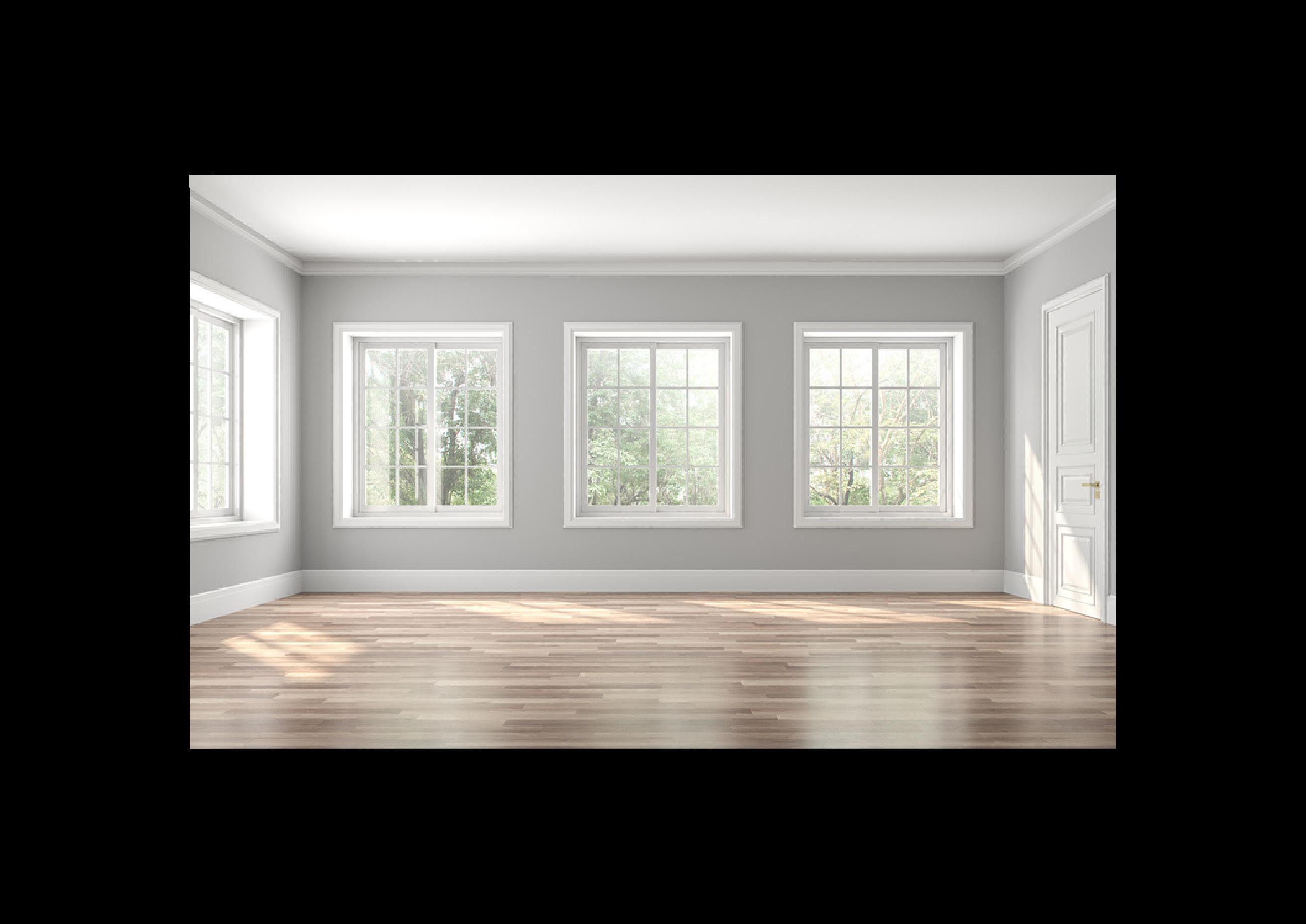
Buyers often have trouble visualizing themselves in an empty home, as there’s no furniture to show the space’s potential. Vacant rooms can feel smaller and less inviting, making minor flaws more noticeable. Staging can help, but it adds costs for renting or buying furniture.
Vacant homes also require ongoing expenses like utilities and maintenance, which may signal to buyers that the seller is motivated and willing to negotiate. This can lead to lower offers.
However, some sellers prefer to sell vacant homes to avoid clutter or the cost of storage units for personal items. Moving out can also help sellers maintain a cleaner, more presentable space.
In short, while occupied homes often sell faster and for higher prices, vacant homes have their own advantages and challenges.

Buyers are looking to fulfill a wish list, so as a seller, it's important to offer as many popular features as possible. The more fixes or replacements buyers notice during a walk-through, the more they see the overall cost increasing. Often, buyers aren’t discouraged by a single major issue, like replacing a garage door or remodeling a bathroom, but by numerous small problems. Today's buyers want a home that checks off items on their wish list, not one that adds tasks to their to-do list.
DOES YOUR HOME HAVE:
•
•
•
good quality countertops? updated light fixtures?
•
updated hardware on sinks/baths/cabinetry?
• updated and matching kitchen appliances?
maintained and operating home systems (electrical, plumbing, etc.)?
DO/DOES YOUR:
•
•
• • rooms feel spacious?
bedrooms feel relaxing?
bathrooms feel clean?
living room feel inviting?
kitchen feel functional?
The longer a homeowner lives in a property, the more emotionally attached they become, often overvaluing it. This can lead to rejecting reasonable offers, hoping for higher bids that may not come. It’s important to view offers as starting points for negotiation and trust your agent's advice on what's fair.
Emotionally attached sellers may expect buyers to appreciate the home as they do, but buyers are focused on how they can make it their own. Staging and removing personal touches help buyers see the space's potential. Remember, this is a temporary transition, and selling quickly can help you move on to a new home.
As a seller, you may need to make sacrifices, like accepting last-minute showings. While it’s stressful, those who embrace these challenges often sell faster.
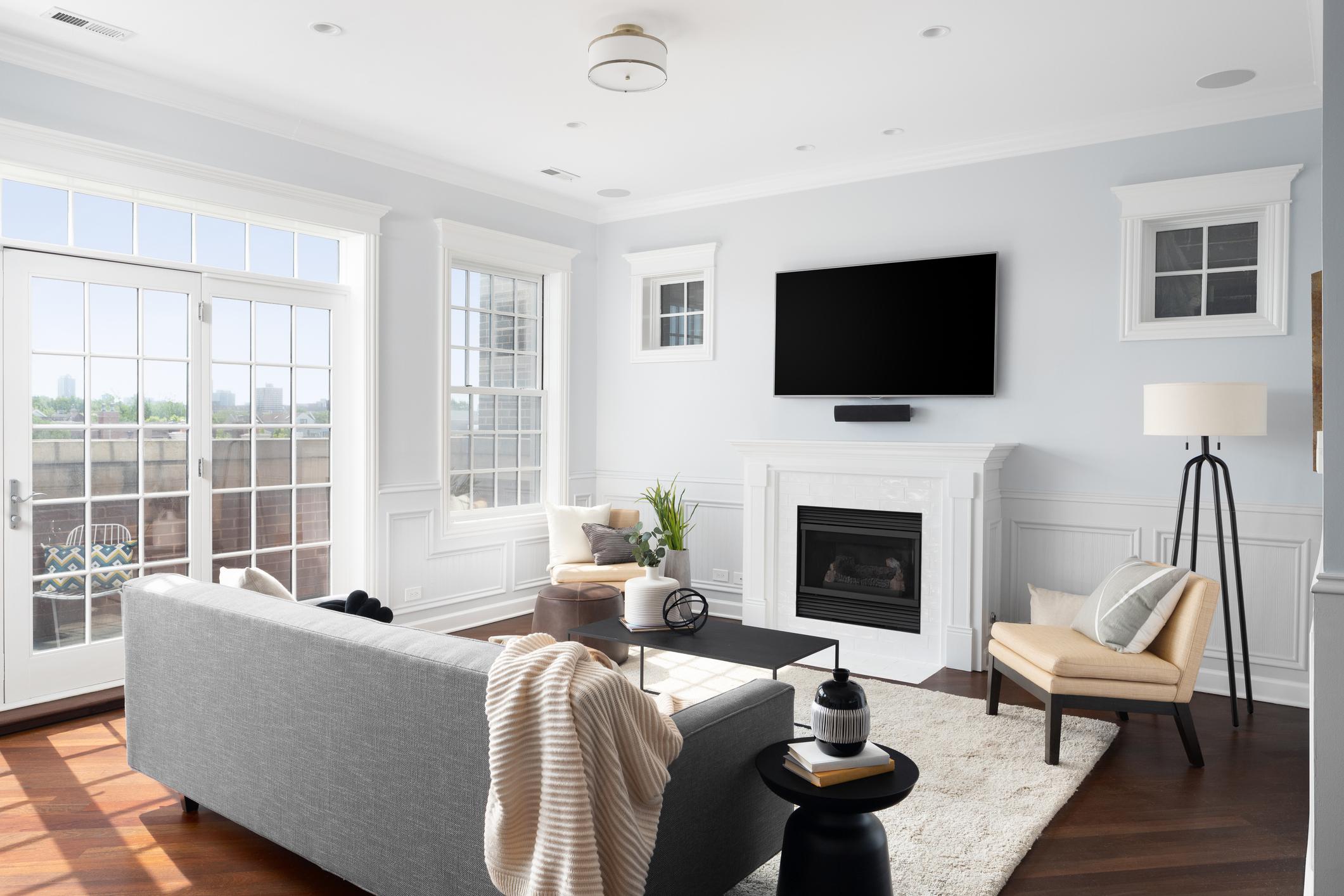

It is not required to get a home inspection before listing your home, but it can be a beneficial option for several reasons.
Having your home inspected beforehand allows you to identify and address major repairs before putting up a “For Sale” sign. In a typical scenario, once a home is under contract, a seller has only a few days to fix any issues or renegotiate the price. By inspecting ahead of time, you'll have more opportunity to compare repair costs and service options. This preparation helps you understand your home's condition, decide which repairs to make, and adjust your asking price accordingly.
Additionally, providing a pre-inspection can help reassure prospective buyers, alleviating concerns about potential issues. For example, a visible crack in the wall might worry buyers about structural problems, but your inspection might reveal it's only a cosmetic issue. While buyers may still opt for their own inspection, they will feel more confident about making an offer.


your home for sale. in prime condition
General Preparation/Repairs
Landscaping & Outdoor
Spaces/Curb Appeal
Cleaning
Declutter/Depersonalize
Paint & Decor
Furniture & Lighting
Flooring
Pre-Listing Home Inspection
Showing Preparation
Document Preparation
In a competitive real estate market, homes that commend the most attention are those in the best condition. You may think that little repairs won't bother buyers too much, but a bunch of little problems give buyers a bunch of little reasons to put your home further down their list. If they aren't bothered at all by them, they will be even more enthused about the home. Take the time to make some general repairs around your home before you put it on the market.
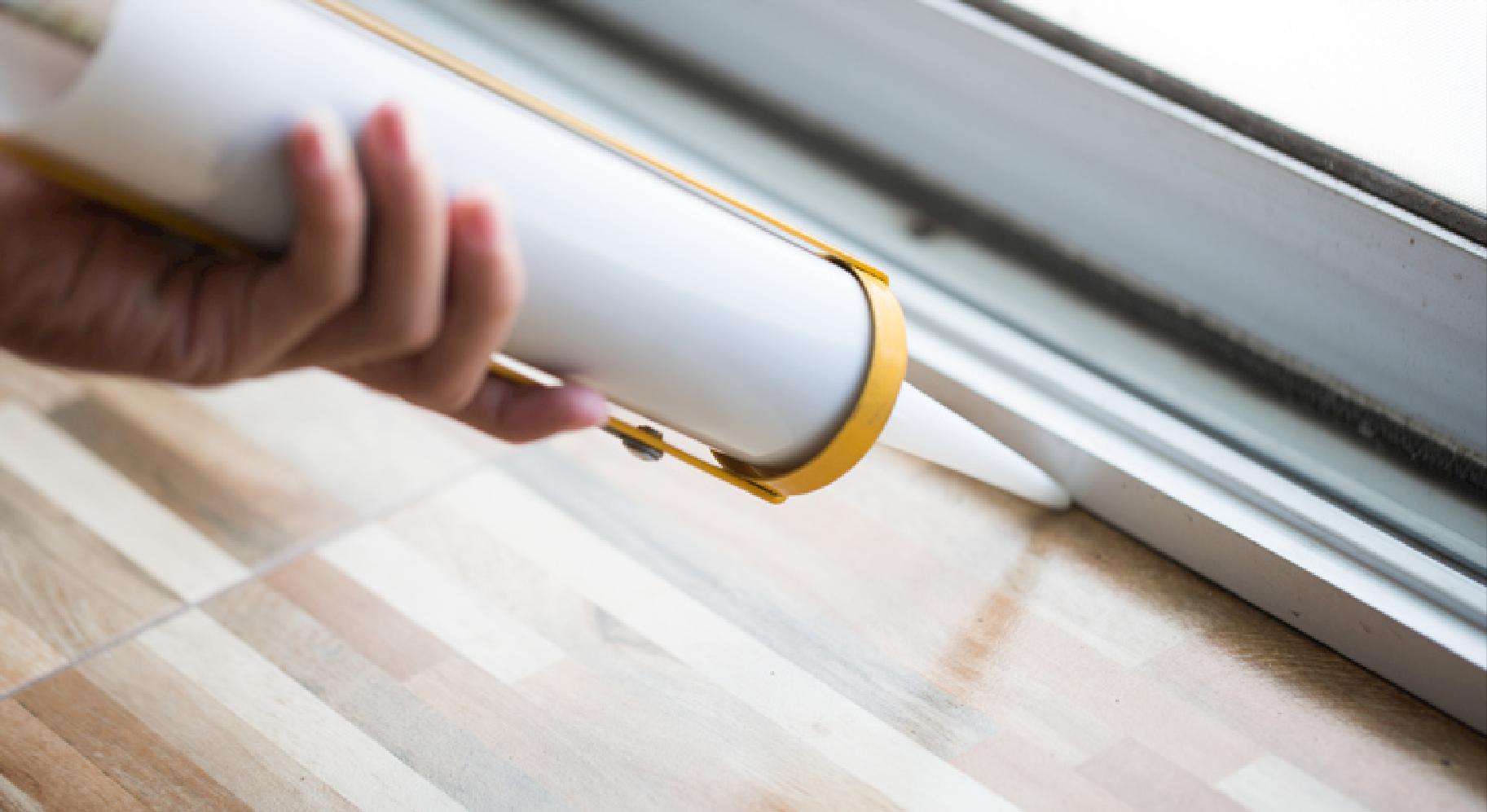

Ensure all indoor and outdoor light fixtures have functioning bulbs to illuminate the property effectively. Address any leaky faucets by repairing or replacing them to prevent water waste and damage.
Fix drawers or doors that don't close properly to ensure smooth and secure operation.
Refresh the caulking around toilets, showers, and sinks to maintain a clean and tidy appearance.
Repair or replace sagging or split screens on windows and doors to improve functionality and aesthetics.
Patch any nail holes in walls or ceilings.
Replace worn weather stripping on doors and windows to improve energy efficiency and insulation.
Repair any loose or damaged tiles in kitchens, bathrooms, or other tiled areas to enhance visual appeal.
Test smoke detectors and carbon monoxide alarms, replacing batteries if necessary, to ensure safety.
Inspect and clean air vents and ducts to improve indoor air quality and HVAC system efficiency.
Address any lingering odors by airing out the home and using odor-neutralizing products as needed.
The initial impression buyers form of your home is based on its curb appeal. Ensure that the front of your home conveys a sense of being well-maintained, inviting buyers to feel excited rather than hesitant about exploring the interior. Additionally, it's crucial to attend to the entire exterior, including the front, back, and side yards, to create a favorable impression.
Major repairs needed:
Minor repairs needed:
Trim trees and shrubs.
Mow the lawn and edge the sidewalks.
Weed flower beds and add fresh mulch.
Clean or repair outdoor furniture. Power wash decks, patios, and walkways.
Check and clean gutters and downspouts.
Inspect and repair siding, roofing, and windows.
Repair or replace damaged or missing shingles, siding, or trim.
Ensure exterior lighting is working and replace bulbs as needed.

The cleanliness of your home holds significant importance and leaves an immediate impression on buyers. A well-maintained and tidy home not only looks appealing but also creates a positive atmosphere. Therefore, it's essential to thoroughly clean your home from top to bottom and uphold its cleanliness throughout the duration of showings.
Vacuum/mop all floors to remove dirt, dust, and debris thoroughly.
Pick up and put away everyday clutter to create a neat and organized space.
Dust furniture, baseboards, ceiling fans, vents, blinds, and any other surfaces to eliminate allergens and maintain cleanliness.
Wash windows to ensure they are streak-free and allow maximum natural light.
Wipe down light switches, door handles, and other frequently touched surfaces with disinfectant.
Clean upholstery and cushions on furniture to remove stains, odors, and allergens.
Polish wooden furniture and surfaces to restore shine and protect against wear and tear.
Empty and clean trash bins and recycling containers to prevent odors and maintain sanitation.
Freshen up curtains, drapes, and blinds by vacuuming or laundering them.
Dust electronics, including TVs, computers, and gaming consoles, to remove dust and fingerprints.
□
□
□ Make the bed neatly with clean linens. Organize closets and keep surfaces tidy.
Put away any laundry.
□
□
□
□
Clean appliances inside and out.
Polish appliance surfaces.
□
□ Deep clean showers, tubs, sinks, and toilets.
Install a new shower curtain or door if needed.
Consider updating fixtures for a modern look. Clean & organize inside drawers & cabinets.
□ Declutter countertops and organize cabinets and drawers.
Consider updating cabinet hardware or painting cabinets for a fresh look.
Wash & put away dishes/empty dishwasher.
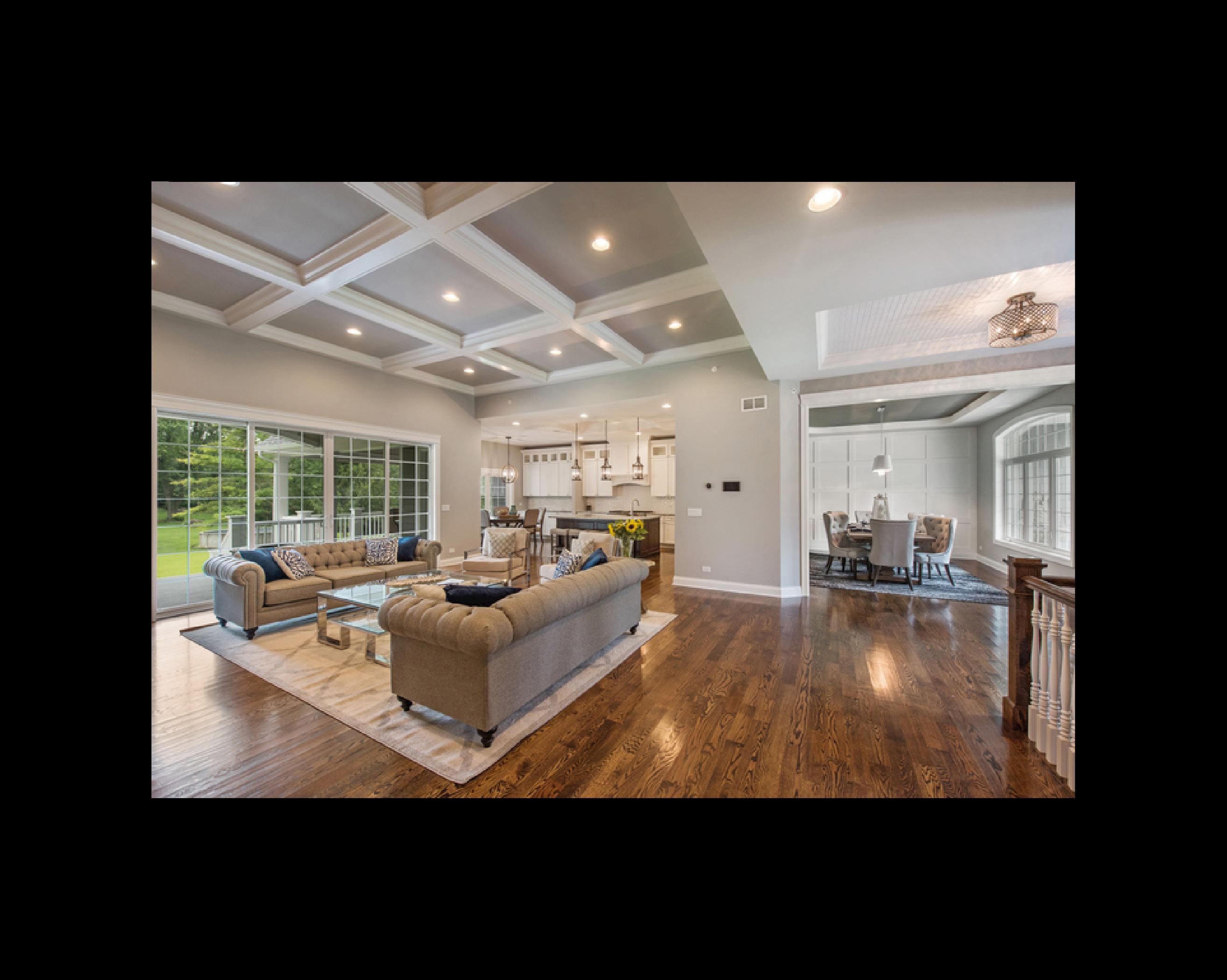
Pack items you won't need before your move (e.g., photo albums, collectibles, off-season items and clothing, extra toys, etc.).
Store unneeded items in a storage unit, or if necessary, in the garage or basement. Ensure boxes and bins are organized neatly.
Put away personal belongings such as jewelry and hygiene products.
Organize and tidy up closets, ensuring they look spacious.
Minimize books and decorative items on shelves to create a cleaner look.
Ensure all surfaces, including tables and desks, are free of excess items.
When selling your home, keep the decor neutral and simple to appeal to all types of buyers. Think of hotel room decor—neutral and clean. A fresh coat of paint in a soft, neutral color is an easy and cost-effective way to spruce up your property. Use simple bed coverings and curtains, avoiding bold colors and strong patterns that can overwhelm or turn off potential buyers.

Repair any cracks, holes, or blemishes in walls and ceilings.
Repaint bold-colored walls in neutral tones. Remove old wallpaper. If walls are already neutral, apply a fresh coat of paint if needed.
Use simple bed coverings and curtains, avoiding overly bold or busy patterns. Keep décor minimal and stylish to appeal to a broad audience.
Add pops of color with simple accessories or fresh flowers.
When potential buyers tour your home, they will focus on how they can utilize the space and rooms. Remove excess furniture and arrange each room to highlight its purpose and functionality. Ensure the furniture is positioned to make the room's traffic flow practical and clear. If your furniture is in poor condition, consider purchasing or renting updated, quality pieces.
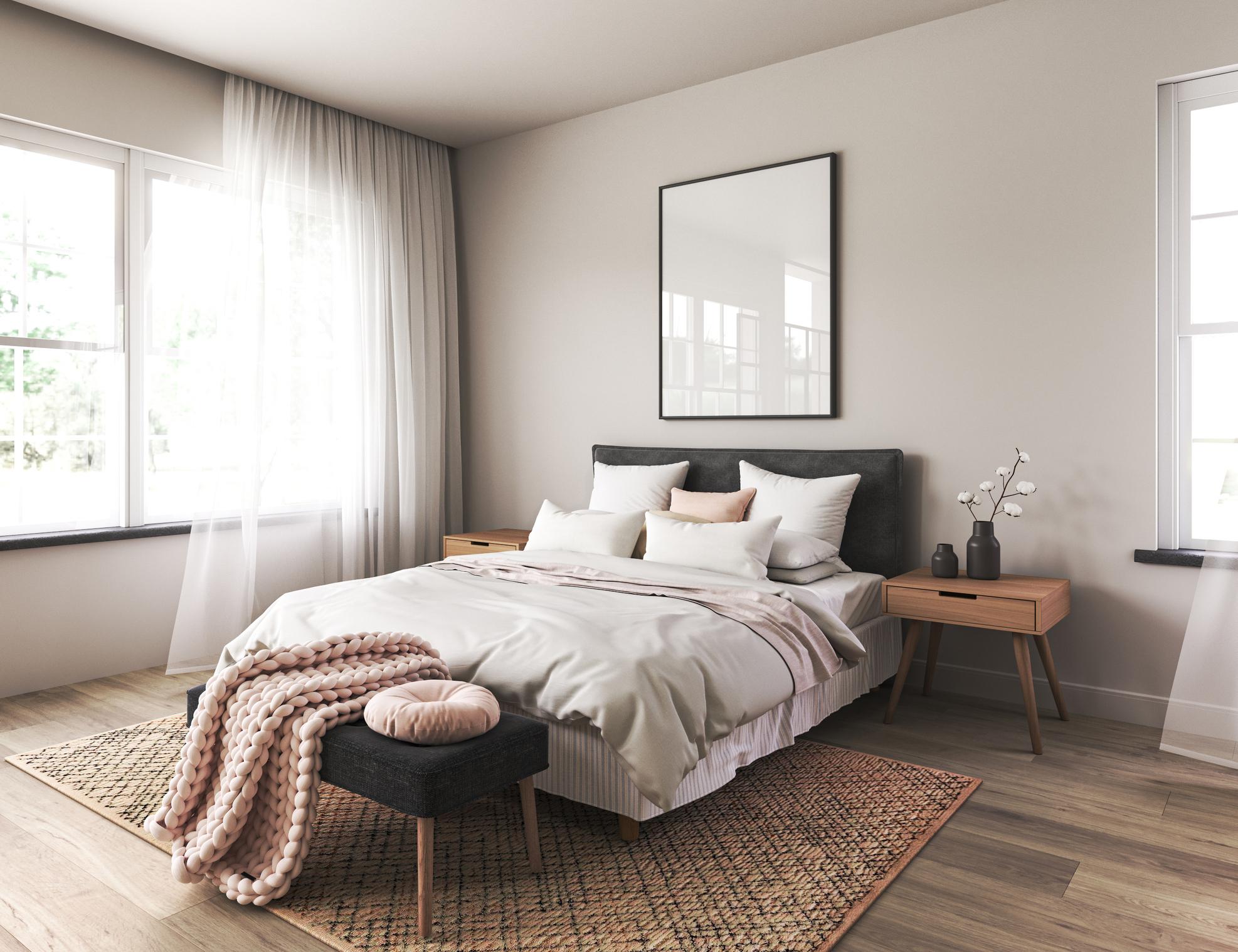
Remove excess, bulky, and outdated furniture. Rearrange rooms to highlight functionality.
In open-concept layouts, group furniture to create distinct sections (e.g., use couches and chairs to separate the living room from the dining area).
Furnish empty rooms to signify their purpose (e.g., add a desk and bookshelf to stage a home office).
Ensure every room has adequate lighting. Replace light bulbs as needed. Update outdated permanent light fixtures.
Flooring plays a significant role in shaping buyers' impressions, particularly in a vacant home. The state of a home's floors speaks volumes about its cleanliness, readiness for occupancy, and overall maintenance. Buyers seek move-in ready homes, and modern, well-maintained flooring stands out as one of the most appealing features.
Rooms that need flooring replaced:
Rooms that need flooring cleaned:
□
Assess the condition of your floors, checking for any damages or stains.
If replacing flooring is not feasible, deep clean carpets and polish hard floors, either professionally or on your own.
For rooms needing carpet replacement, select a style that complements the rest of the home's flooring. For hardwood floors, consider refinishing if necessary.
Replace outdated or brightly colored flooring with a neutral and contemporary style.


Things to think about:
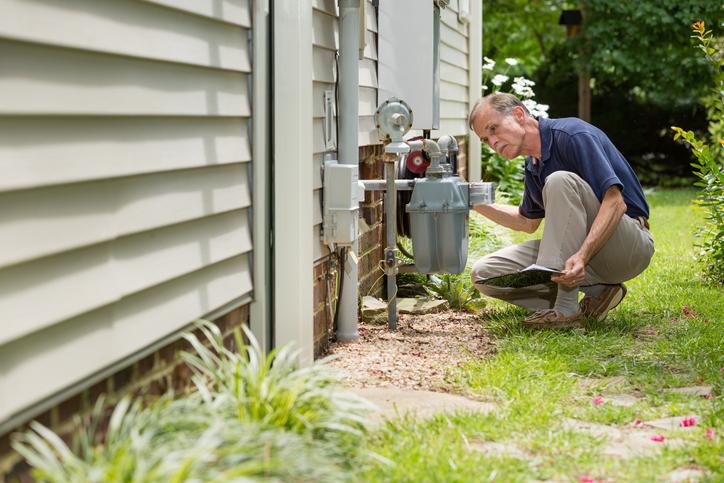
What year was your home built?
Are your home systems in good working order? How old are they?
How old is your roof? What condition is it in?
Are there any dips or bumps in the flooring that may indicate structural problems?
Do you see any water stains or cracks in walls/ceilings?
Have you had problems with mold or mildew?
Are your windows in good condition?
Do all your windows and doors open, close, and lock properly?
What condition are your gutters in? Are they clean and properly directing water away from the home?
Preparing your home for showings is essential to make a lasting impression on potential buyers. This showing preparation checklist offers simple yet effective tips to ensure your home is presented in the best possible light. By keeping your home clean, removing pets, letting in natural light, setting a comfortable temperature, and adding inviting touches, you can create a welcoming atmosphere that captivates visitors and highlights the full potential of your property.
□
□
□ Keep the home clean and tidy at all times for scheduled showings. Remove pets or arrange for them to be out of the house during showings. Open curtains and blinds to let in natural light and make rooms feel more spacious.

REALTOR® for an appointment. Your cooperation is valued and contributes to expediting the sale process.
Preparing the necessary documents for the sale of your property is crucial to ensure a smooth and successful transaction. By gathering documents such as the deed, title insurance policy, and survey, organizing receipts for repairs, compiling utility bills and tax records, and providing permits for renovations, you can demonstrate transparency and readiness, instilling confidence in potential buyers and facilitating a seamless sale of your property.

Organize receipts and warranties for recent repairs or renovations. Compile utility bills, property tax records, and homeowners association documents. Provide copies of any relevant permits for renovations or additions.
Throughout the entire selling process, I'll be here to provide guidance, support, and expert advice to ensure a successful sale of your home. Let's work together to achieve your real estate goals!
Meet with Me: As your real estate agent, our first step is to meet and discuss your goals, timeline, and any specific needs or concerns you have regarding the sale of your home.
Agree on Selling Plan: Together, we'll develop a personalized selling plan tailored to your unique situation. This plan will outline the steps we'll take to market and sell your home effectively.
Home Staging: We'll work on staging your home to highlight its best features and appeal to potential buyers. This may involve decluttering, rearranging furniture, and adding decorative touches to enhance its overall presentation.
Listing Paperwork: We'll prepare all the necessary listing paperwork, including the listing agreement, disclosures, and any other required documents needed to list your home on the market.
Photography: Professional photography is essential for showcasing your home in its best light. We'll arrange for high-quality photos to be taken to attract buyers online and in marketing materials.
Market Exposure: I'll implement a comprehensive marketing strategy to give your home maximum exposure to potential buyers. This may include online listings, social media promotion, open houses, and targeted advertising campaigns.
Showings: I'll coordinate showings and open houses to allow potential buyers to tour your home. I'll work with you to schedule showings at convenient times and ensure your home is always presented in its best condition.
Price Adjustments as Needed: If necessary, we'll adjust the listing price based on market feedback, changes in market conditions, or other factors affecting the sale of your home.
Offers & Negotiations: When offers are received, I'll promptly present them to you, along with any relevant terms and conditions, and provide guidance to help you evaluate each offer. I'll then negotiate with buyers or their agents on your behalf to secure the best possible terms, including preparing and presenting counteroffers if necessary, until a mutually beneficial agreement is reached.
Accepted Contract: Once an offer is accepted and a contract is signed by both parties, we'll move forward with the next steps in the closing process.
Inspections & Repairs: The buyer may conduct inspections of your home to assess its condition and identify any issues that need to be addressed before closing. After inspections, we'll negotiate repairs or credits with the buyer to resolve any issues identified, ensuring your home is in optimal condition before closing.
Closing: On the closing day, you'll sign the final paperwork to transfer ownership of the property to the buyer. Once all documents are signed and funds are exchanged, the sale will be complete, and you can hand over the keys to the new owner.

